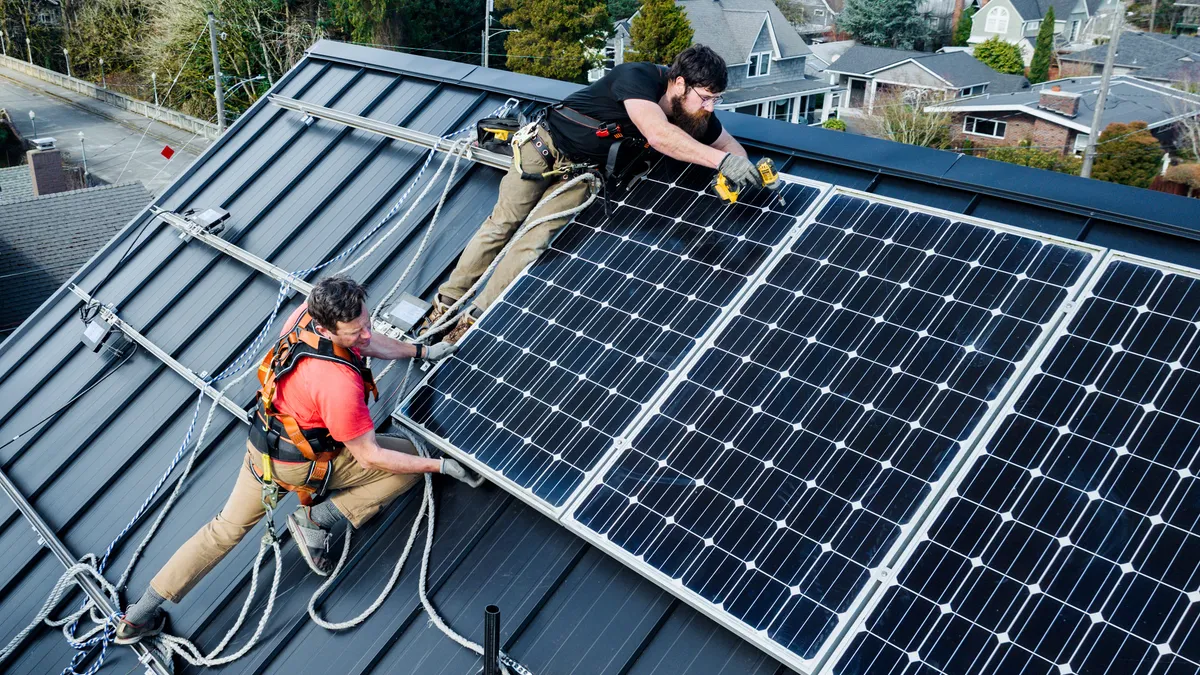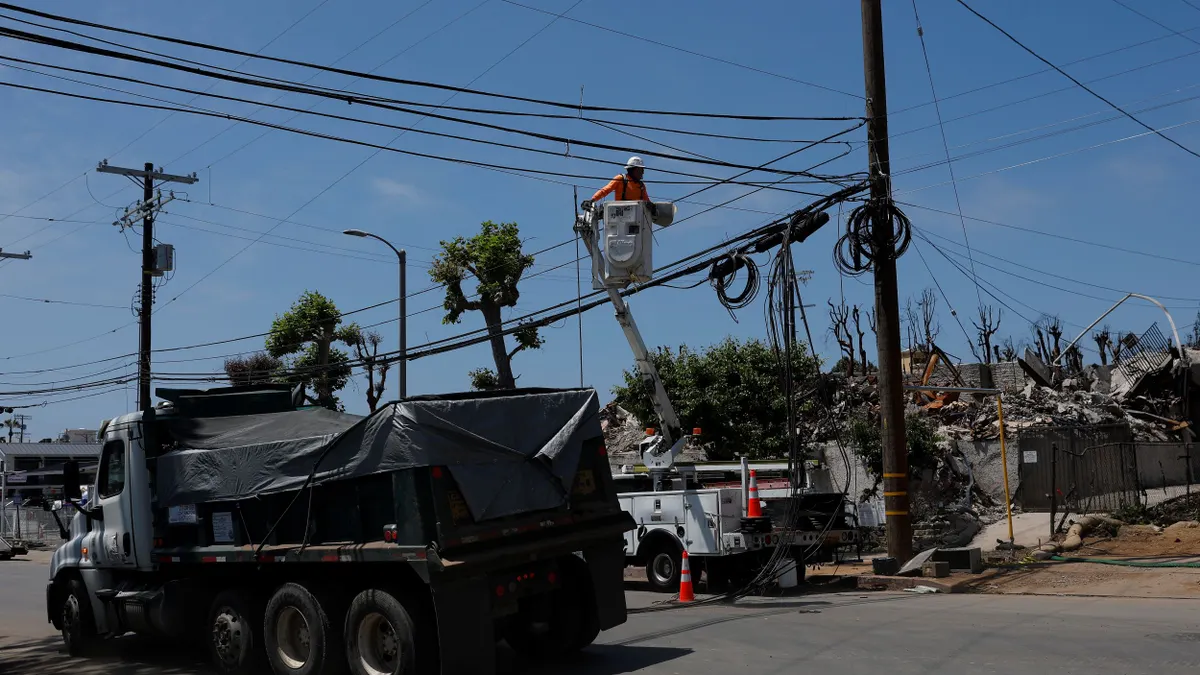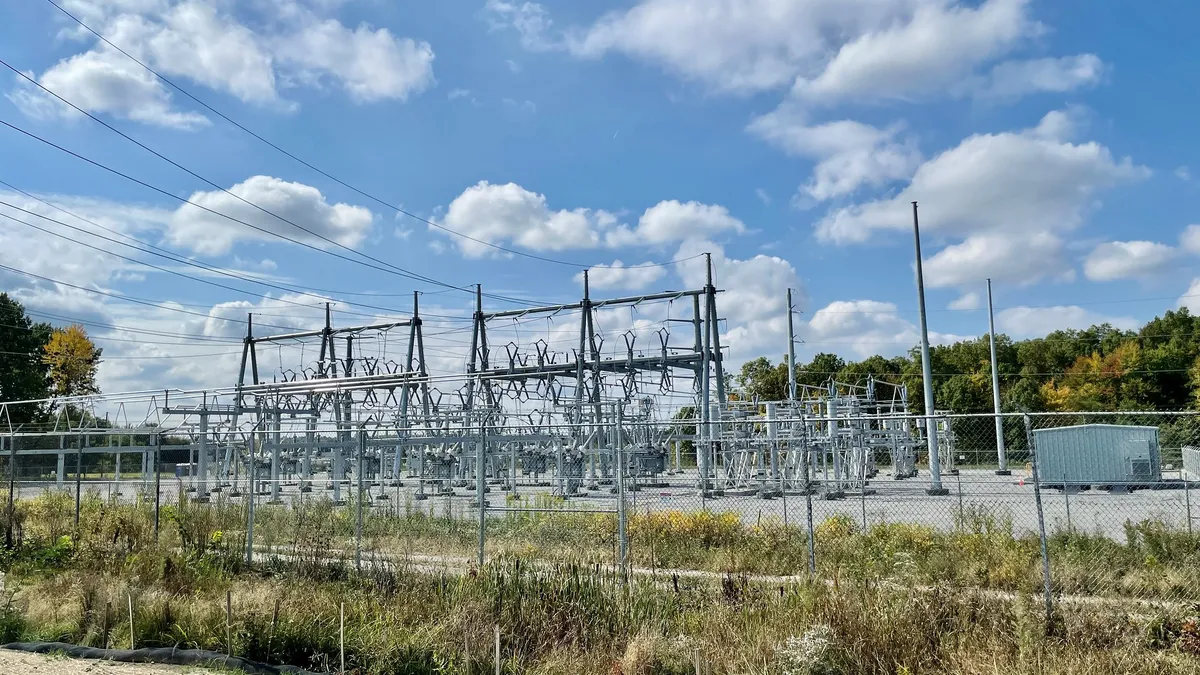It has been less than a week since states and major cities began instituting quarantines along with stay-home and shelter-in-place directives to reduce the spread of COVID-19. The full impacts on electricity usage are not yet known, but grid operators say demand is both shifting and falling. Data from overseas may give an indication of just how steep the declines could become.
Italy instituted lockdowns and closed essential businesses earlier this month, in response to a spike in novel coronavirus infections. According to the Electric Power Research Institute (EPRI), the country has since witnessed a significant decline in electricity demand.
Five to seven days after Italy's lockdown began, the country saw an 18% to 21% reduction in peak demand and energy use on a year-over-year basis, according to EPRI data. The demand decline began with a more modest 10% reduction in peak demand in the first two days after beginning its lockdown on March 12 and 13.
In the United States, grid operators say it is too soon to get a firm handle on the impacts of coronavirus shutdowns, but some are already seeing usage declines. Propelling those declines, S&P Global is predicting a global recession this year, and estimates the United States economy will see a 6% seasonally adjusted second quarter contraction before beginning to recover in the second half of the year.
"In the near term, utilities will likely see some reduced sales volumes as major sporting events, concerts and businesses scale back drastically, compounded even further by social distancing requirements being mandated or recommended by federal and local governments across North America," S&P said in a March 19 report.
While the firm believes "the majority of North American regulated utilities are well positioned to handle the immediate impact of COVID-19," the report also warned a few with "disproportionate exposure to [the] commercial and industrial class of customers could be vulnerable to reduced sales volumes."
Some of those impacts could be passed along to consumers, according to James Newcomb, managing director of emerging solutions at Rocky Mountain Institute (RMI).
"As a consequence of lower energy use and lower capacity demands from the system, utilities will collect less revenue in the form of rates during this downturn of industrial productivity and economic activity," Newcomb told Utility Dive in an email.
While some of this lost revenue will be mitigated through cost reductions including lower fuel expenditures, Newcomb also said RMI's preliminary assessment indicates "this will only mitigate part of the lost revenue."
"Utilities may ask regulators for increased cost recovery through rate increases in the future as a result," Newcomb said, adding that this will also depend on specific-state policies such as decoupling.
However, investment research platform SSR estimates that utilities in the early stages of rate cases right now will be very vulnerable and could have their return on equity lowered by regulators. SSR identified the four most vulnerable companies as Michigan-based CMS Energy, Duke Energy, Hawaiian Electric and Pinnacle West Capital, the parent-company of Arizona Public Service.
"They're on the front line because they're the first ones in before regulators," Eric Selmon, report co-author and co-head of SSR's utility and renewable energy research, told Utility Dive. "Deferring their rate cases may be the best thing they can do," to avoid pressure from regulators. Because of limits on public meetings, he added, the rate cases may be put off by the commissions as well.
While the impacts on electricity demand are only beginning to emerge, grid operators around the country are reporting demand declines and shifts in load shapes.
Load declines, shifts in major markets
ISO New England, in a Friday blog post, said it has witnessed a decline in system demand of approximately 3% to 5%, "compared to what would normally be expected under weather conditions in the region."
Along with demand reductions, the grid operator said the changes are also affecting demand patterns across the region.
"ISO forecasters see load patterns that resemble those of snow days, when schools are closed and many are home during the day," the grid operator said. "These patterns include a slower than normal ramp of usage in the morning, and increased energy use in the afternoon."
"We have already begun to see a decline in power futures in MISO and other markets. These declines will result in lower revenues for generators."

James Newcomb
Managing director of emerging solutions, Rocky Mountain Institute
PJM Interconnection reported a similar load decline as well. The grid operator for much of the Mid-Atlantic told Utility Dive in an email that on March 16, when the system would normally have expected about 100,000 MW of load, "with the special circumstances, we dialed down the forecast to about 94,500 and it came in at about 95,500."
"We don’t have a complete picture yet of what the impacts are, but we can tell you that the shift in work patterns and business closures is likely behind subtle shifts in electricity use," PJM spokesman Jeff Shields said in an email.
PJM's highest electricity use is now coming in a little later in the morning, and the grid operator expects electricity use to "drop to some degree if schools and businesses continue to stay shuttered because of the coronavirus. Electricity use will more closely resemble weekend days."
In California, Democratic Gov. Gavin Newsom issued a stay-at-home order on March 19. The state's grid operator is in a "very fluid situation, with the state and counties announcing new policies almost daily this past week," California ISO spokesperson Anne Gonzales told Utility Dive.
"In the areas currently under shelter-in-place orders and directives, we are seeing reduction in load, especially in those areas that have more population, such as the Bay Area, where there’s small businesses and corporate concentration," she said.
California inland areas with more industrial users "are not seeing the [same] level of load reduction, but they are also generally not in shelter-in-place areas," Gonzales added. "While we are seeing lower consumption needs, we are still analyzing how much of a reduction there is and running models to isolate for shelter-in-place behavior."
Midcontinent ISO (MISO) officials say that while load is weather dependent, the grid operator has seen peaks this month down 18% compared to March 2019 and down 13% month to date compared to the March average since 2014.
"We believe this is attributed to a combination of both the milder weather and the pandemic-related closures and adjusted operating hours of non-critical businesses," MISO spokesperson Allison Bermudez said in an email.
RMI's Newcomb said the impacts of coronavirus are showing up in the grid operator's wholesale futures markets.
"In competitive markets, the reduction in overall demand from the slowdown will have an impact on the dispatch of resources and the generation mix," Newcomb said. "We have already begun to see a decline in power futures in MISO and other markets. These declines will result in lower revenues for generators."
Newcomb said RMI has seen declines of around $1/MWh to $2/MWh, though he added "this will fluctuate in the weeks ahead."
"Depending on how long this economic downturn persists, this may push some generators out of the market for the long-term," Newcomb said. Older and less-efficient coal generators are "particularly vulnerable and may drop out of the market."
Renewables in competitive markets could benefit
The reduction in market clearing prices will also favor solar and wind generators that have low or no marginal costs, Newcomb said. And while the global economic slowdown has reduced oil and gas prices significantly, he said it is still unclear how the dispatch of gas-fired resources will be impacted.
Shifts in load profiles could also lead to a better match of demand with solar power generation, Newcomb said. "As a consequence, we expect to see a reduction in curtailment of solar power," he told Utility Dive.
There may also be a reduction in the amount of demand response participating in markets, Newcomb said, "since many demand response resources are integrated with industrial and commercial business operations, many of which may have slowed or stopped altogether."
Not all grid operators have witnessed load impacts, however.
The Southwest Power Pool "has not seen a discernible difference in load within the footprint," spokesperson Meghan Sever told Utility Dive in an email, though there have been changes to usage patterns.
"The virus’s impact on schools and local businesses means more people are at home using electricity during the day," Sever said.
In Texas, grid officials told Utility Dive they are monitoring any changes to energy use but "because school and business closures continue to evolve, it is too early to determine COVID-19’s impact on electric load patterns." Any changes to the summer peak load forecast will be announced in the Electric Reliability Council of Texas' final summer Seasonal Assessment of Resource Adequacy in early May.
In New York, grid officials say it is too soon to draw conclusions.
"We are not currently seeing a significant decrease in daily peak demand, but we are observing shifts in energy usage patterns throughout the state compared to prior weeks," New York ISO spokesman Zachary Hutchins said in an email. "We will continue to monitor for trends as new data becomes available."
Iulia Gheorghiu contributed to this reporting.






















